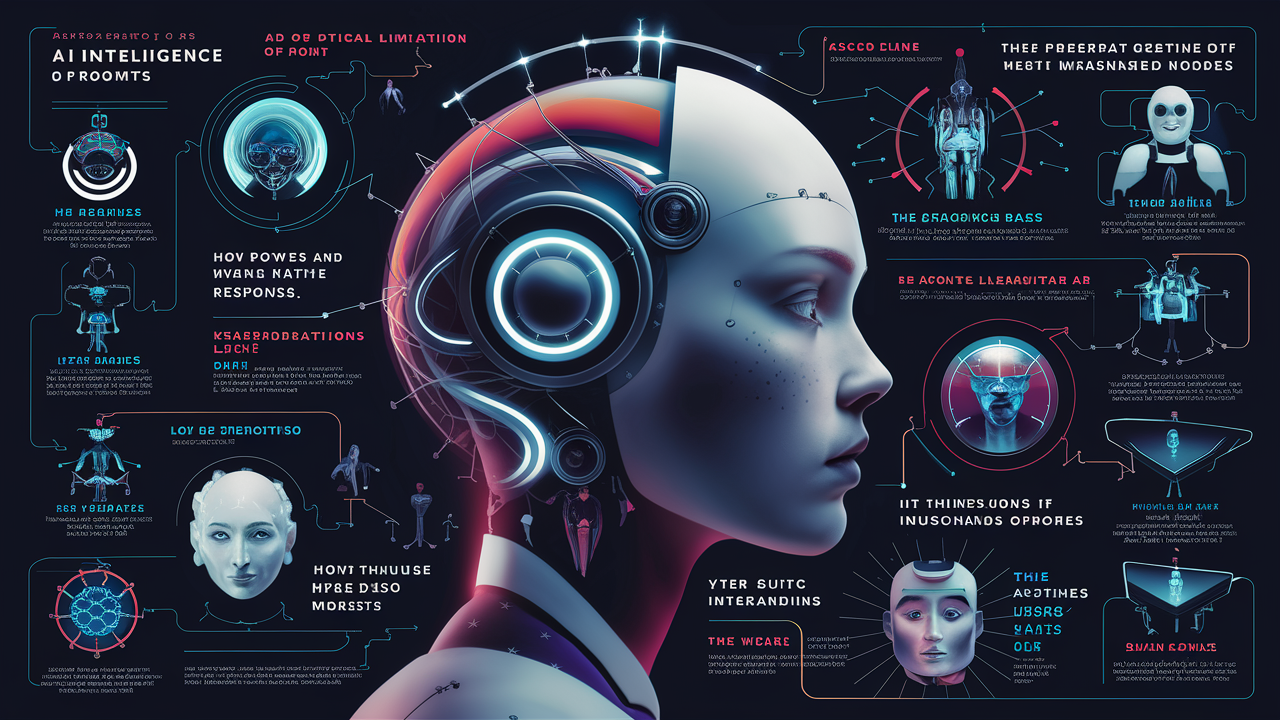Are AI Models Smart or Dumb? The Power and Limitations of Prompts
Can AI think for itself? Turns out, the "smartness" of AI depends on how you ask. Discover the surprising role of prompts and why even the cleverest AI models need specific guidance.

Artificial Intelligence (AI) has rapidly advanced, driving impressive breakthroughs in everything from image generation to language translation. Yet, even the most advanced AI models have a peculiar quirk—their output quality is heavily dependent on the quality of the input instructions, known as prompts. This raises an intriguing question: Are AI models truly smart, or does their reliance on nearly perfect prompts reveal fundamental limitations?
In this article, we'll delve into the relationship between AI prompts, output quality, and the complexities of defining what constitutes "artificial intelligence." We'll explore real-world examples to illuminate the impact of well-crafted prompts and offer insights into why AI sometimes struggles with straightforward directions.
The Power of Prompts
A prompt is like the blueprint you give to an AI model. Well-crafted prompts provide the necessary context, focus, and guidelines for the AI to generate relevant and desired results. However, poorly designed prompts often lead to nonsensical, irrelevant, or incomplete responses.
Let's consider an example using a text-to-image AI model:
- Generic Prompt: "Generate an image of a cat."
- Potential Outcome: The AI might produce a basic, cartoonish illustration of a cat, lacking detail or creative flair.

- Detailed Prompt: "Generate a photorealistic image of a fluffy ginger cat with piercing green eyes playfully swiping at a dangling yarn ball in a sunlit room."
- Potential Outcome: The AI is more likely to create a detailed image that captures the described scene, incorporating rich textures, shadows, and a sense of movement.

Why Prompts Matter: AI Models as Tools, Not Intelligence
The reliance on meticulously crafted prompts highlights a key difference between AI models and human intelligence. Current AI systems excel at pattern recognition, statistical learning, and generating outputs within the data parameters they've been trained on. But they often lack the common sense, contextual understanding, and ability to generalize that we associate with human intelligence.
Think of an AI model as a highly specialized tool. A skilled craftsman can create masterpieces using a chisel, but the tool itself lacks creative vision. Similarly, an AI model depends on the user to define the desired outcome.
The Challenge of "Simple" Directions
If AI models aren't inherently intelligent, why do they sometimes struggle with seemingly simple instructions? Here's why:
- Ambiguity in Language: Human language is full of nuances, interpretations, and implicit knowledge that AI models may not fully grasp. A "simple" instruction for a human might carry hidden complexities for an AI.
- Lack of World Knowledge: AI models primarily learn from datasets, often confined to specific domains. They lack the real-world experiences humans rely on to interpret and respond to instructions.
- Overly Broad Prompts: Open-ended prompts leave too much room for interpretation, leading to unpredictable or unsatisfactory AI outputs. A lack of clear parameters can derail results.
Examples of Prompt Engineering
Let's illustrate the importance of prompt engineering across various AI applications:
- Chatbots:
- Poor Prompt: "Tell me something about yourself."
- Better Prompt: "You are a chatbot for a travel agency. A user asks, 'I'm interested in budget-friendly, family vacation destinations for next summer. Do you have recommendations?'"
- Image Generation:
- Poor Prompt: "A painting of a landscape."
- Better Prompt: "A vibrant oil painting of a rugged coastal landscape at sunset, with dramatic waves crashing against the rocks."
- Language Translation:
- Poor Prompt: "Translate this sentence into French."
- Better Prompt: "Translate this technical document into French, ensuring the industry-specific terminology is accurately conveyed."
The Evolution of AI: Towards Less Prompt Dependence
While prompt dependence is a current reality, AI is constantly evolving. Here's what the future may hold:
Key Areas Where AI May Become "Smarter"
- Embodied AI & Experiential Learning:
- Beyond Datasets: Imagine AI models interacting with simulated or real-world environments (e.g., robots). This direct experience could build a more nuanced understanding of the world, reducing reliance on purely curated datasets.
- Learning from Action: Instead of being confined to passive data analysis, AI models that can take actions and observe consequences could develop more intuitive reasoning skills, mimicking how humans learn.
- Neuro-symbolic AI: Combining Strengths
- Neural Networks for Intuition: Current deep learning models excel at pattern recognition. This "intuitive" ability could be integrated with symbolic AI – rule-based systems that handle logic and reasoning.
- Hybrid Intelligence: This blending of approaches could allow AI models to reason logically with knowledge gleaned from unstructured data, potentially overcoming prompt over-specificity issues and better handling ambiguity.
- Transfer Learning and Few-Shot Learning:
- Adapting with Less Data: Currently, fine-tuning AI models for new tasks often requires large amounts of new data. Transfer learning lets models utilize knowledge gained from previous tasks, while few-shot learning aims to make them learn with minimal examples.
- Greater Generalizability: These techniques could make AI less brittle and decrease prompt dependence, allowing models to adapt to a broader range of instructions more seamlessly.
- Self-Supervised Learning:
- Finding Patterns on Their Own: AI models could learn to identify patterns and structures within massive, unlabeled datasets rather than relying solely on human-labeled data. This could build foundational knowledge for tackling different tasks with less detailed prompting.
- Unlocking Hidden Insights: The ability to learn from unprocessed information could lead to AI models discovering patterns and correlations that humans might miss.
- Understanding Intent & Incorporating User Feedback:
- Beyond Literal Interpretation: AI models could evolve to grasp not just the literal meaning of prompts but also the underlying goals of the user. This would allow for less rigid and more conversational interactions.
- Learning from Refinements: Imagine AI systems that present multiple output variations. User feedback and iterative refinement could guide the model toward the desired result with less prompt engineering.
The Future: A More Natural Interaction
AI models are powerful tools, but their success hinges on well-designed prompts and a clear understanding of their capabilities. Rather than seeking total autonomy, the goal is a symbiotic relationship where AI's generative and pattern-finding abilities empower human creativity and judgment.
As AI advances, the need for perfect prompts might diminish, but the ability to communicate effectively with these artificial systems will remain crucial for unlocking their true potential. The goal isn't necessarily to make AI models understand every casual human command flawlessly. Instead, it's about evolving AI into a more collaborative partner, able to intuit, reason, adapt, and learn in ways that feel more natural to us.

